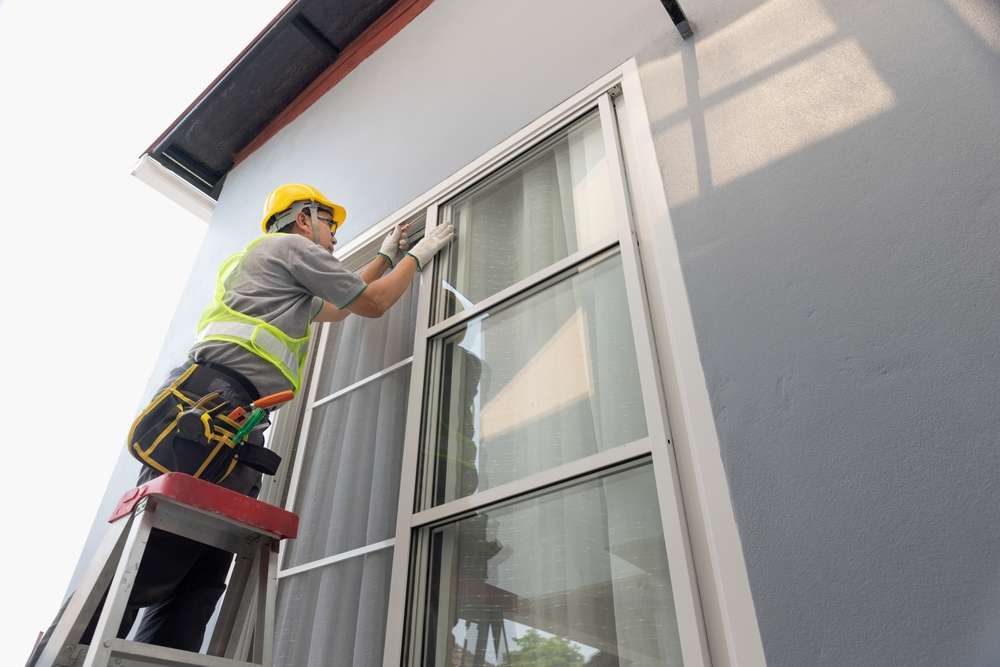Homeowner's Garage Door Repair & Maintenance Guide
A faulty garage door compromises safety, convenience, and curb appeal. This comprehensive guide explains common causes of garage door failure, practical DIY maintenance, when to call a licensed contractor, and how to select reliable local service providers. Learn repair vs. replacement considerations, safety tips for high‑tension parts, and what questions to ask to protect your home and budget.

Homeowner’s Garage Door Repair & Maintenance Guide
A malfunctioning garage door can disrupt daily routines and create safety hazards. Understanding typical failure points, sensible home maintenance, and when to hire a professional helps you keep the system working reliably and safely. Below is a practical walkthrough of causes, DIY tasks you can do, warning signs, contractor selection tips, and a short list of reputable providers.
What commonly causes garage door failures
Most residential garage door problems stem from mechanical wear, neglected lubrication, or damaged components. Torsion and extension springs gradually lose their tension over time; cables may fray; rollers can freeze or wear down; and tracks sometimes bend or become misaligned. Openers also wear out — motor brushes, circuit boards, and safety sensors can fail. Environmental exposure such as moisture, extreme temperature swings, and dirt accelerate wear and corrosion. Early indicators to watch for include odd grinding or squealing noises, uneven or jerky movement, slow travel, or the door failing to remain balanced when manually operated.
What maintenance is safe to do yourself
There are several routine tasks most homeowners can perform to reduce the risk of breakdowns. Every few months you can:
- Inspect tracks and rollers for obstructions and clean out dirt or debris.
- Tighten loose fasteners and hardware around hinges and brackets.
- Lubricate metal rollers, hinges, and recommended pivot points with a manufacturer‑approved lubricant (avoid heavy greases on nylon rollers unless specified).
- Test safety sensors and the auto‑reverse feature by placing an object in the door path to confirm it stops and reverses.
- Replace worn weatherstripping to keep out drafts and moisture.
- Keep the opener’s backup battery fresh if your unit has one, and note any warning lights or error codes.
Always disconnect power to the opener before doing work that brings you near moving parts, and consult the owner’s manual for model‑specific guidance.
Why some repairs should be left to professionals
Certain components store significant energy or require specialized tools and training. Torsion springs, extension springs, and support cables are under high tension and can cause severe injury or property damage if handled improperly. Major track repairs, spring replacements, and complex opener electronics (such as logic board or motor issues) should be performed by licensed technicians. Professionals have the correct tools, replacement parts, and safety procedures — and they carry insurance to protect you in case of accidental damage.
When to call a contractor
Seek a qualified technician when you notice:
- A broken spring or visibly frayed cable.
- A door that is badly out of balance or comes off its tracks.
- Significant dents, bends, or rusted hardware that affect operation.
- Persistent electrical faults, error codes, or an opener that won’t respond.
Also consider hiring a contractor if your door is custom, very old, or if a temporary fix would likely be short‑lived. A skilled contractor can perform a proper diagnostic, rebalance the door, calibrate sensors and travel limits, and advise whether repair or replacement is the more economical long‑term choice.
How to maintain a garage door to extend its life
A simple, consistent maintenance routine reduces emergency repairs. Recommended practices:
- Quarterly: Inspect rollers, hinges, and tracks; clear debris; and lubricate moving metal parts with the lubricant the manufacturer recommends.
- Monthly: Test safety sensors, the manual release, and the door’s auto‑reverse function. Look for uneven movement or strange sounds during operation.
- Yearly: Check rollers and cables for wear, examine weather seals, and have a professional balance test if the door feels heavy or unsteady.
- Record all maintenance and repairs in a log so technicians can see the service history and make informed recommendations.
Choosing a reliable local service provider
When evaluating contractors, verify their licensing and insurance, and read verified customer reviews. Ask prospective providers:
- Do you guarantee parts and labor, and what are the warranty terms?
- Are technicians factory‑trained for my door and opener brand?
- Do you keep common replacement parts in stock for faster service?
- Can you provide a written estimate and timeline before starting work?
Get multiple estimates for non‑emergency jobs and prefer contractors who explain options clearly and prioritize safety checks like sensor alignment and auto‑reverse testing.
| Provider Name | Services Offered | Key Features/Benefits |
|---|---|---|
| Precision Door Service | Residential repair, installation, maintenance | Nationwide network of trained technicians; many locations offer inspections and same‑day service |
| Overhead Door Company | Door and opener repair, new door sales, commercial services | Established brand with factory doors and an extensive dealer network for parts and installation |
| The Home Depot Installation Services | Garage door replacement and repair via partnered installers | Convenient scheduling and nationwide reach through vetted installers; combines product purchase and installation |
| Chamberlain Group (authorized dealers) | Garage door opener products and dealer installation/repair | Leading opener manufacturer; authorized dealers provide compatible parts and professional installation |
Cost disclaimer: Prices, availability, and services vary by location. Contact providers for current estimates and specific pricing.
Final thoughts
Regular inspections and prompt attention to unusual sounds, imbalance, or sensor issues will keep your garage door operating safely. Handle basic upkeep yourself — cleaning, lubrication, and sensor checks — but leave spring, cable, and major electrical work to trained professionals. Keeping records, verifying credentials, and asking the right questions when hiring will protect your investment and help you choose the most reliable, cost‑effective repair or replacement option for your home.






